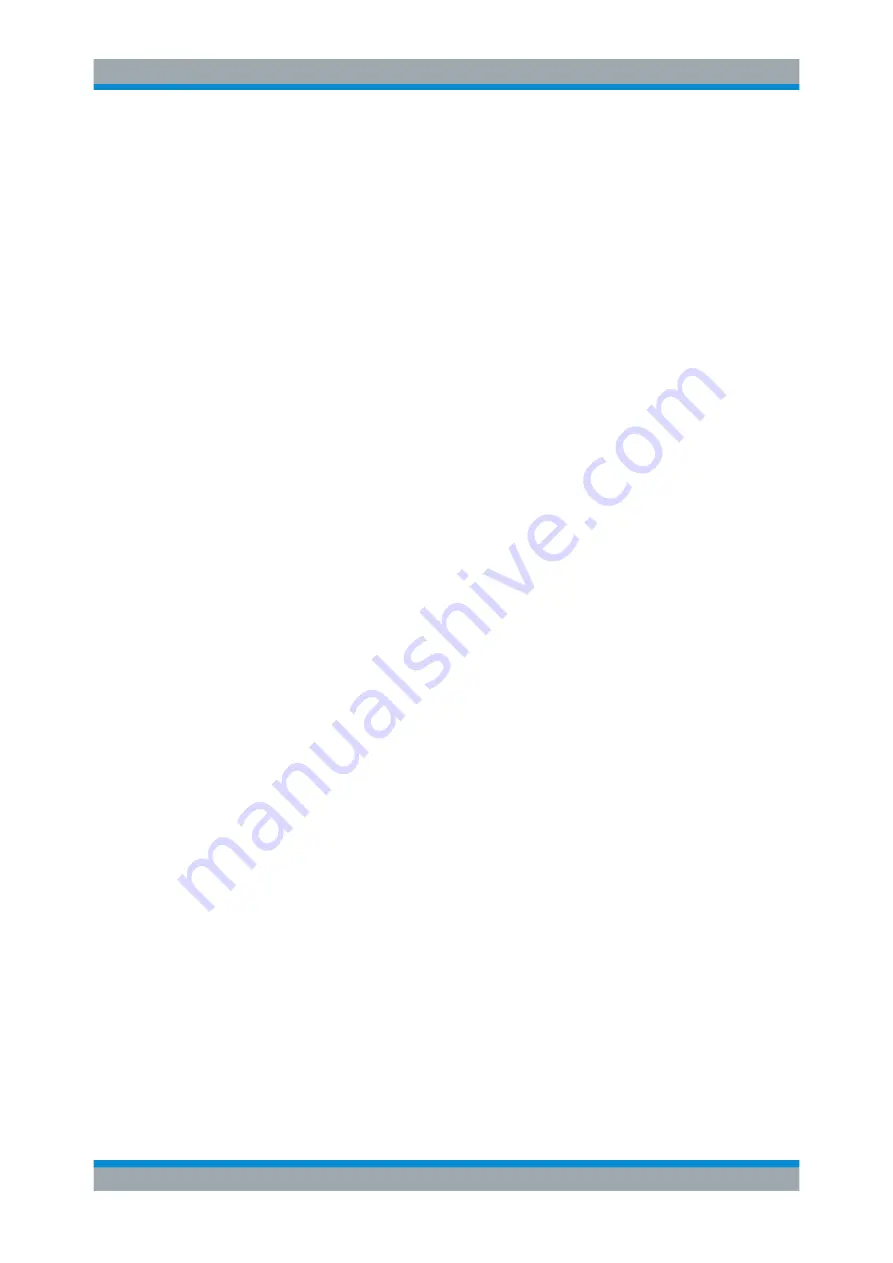
Common Measurement Settings
R&S
®
FSVA3000/ R&S
®
FSV3000
401
User Manual 1178.8520.02 ─ 01
8.6.1.4
How to Configure a Triggered Measurement
To define a time trigger:
1. In the "Trigger And Gate" dialog box, define the "Trigger Source" = "Time" .
2. Define the "Repetition Interval" : the time after which a new measurement is star-
ted.
To define an external trigger:
1. Connect an external device that will provide the trigger signal to one of the Trigger
Input / Output connectors on the R&S
FSV/A (for details see the R&S
FSV/A "Get-
ting Started" manual).
2. In the "Trigger And Gate" dialog box, define the "Trigger Source" = "External" .
3. If you are using the variable Trigger 2 Input / Output connector, you must define its
use as an input connector. In the "Trigger In/Out" tab of the "Trigger And Gate" dia-
log box, set the corresponding trigger to "Input" .
(Note: Trigger 2 is on the front panel, Trigger 3 is on the rear panel.)
4. Configure the external trigger as described for the other power triggers.
To define a power trigger:
1. In the "Trigger And Gate" dialog box, define the "Trigger Source" = "IF Power" .
Alternatively, define "Trigger Source" = "Video" . The video signal corresponds to
the envelope of the IF signal: it has been processed by the resolution and video
filters and the selected detector.
2. Define the "Trigger Level" : the power level at which the measurement will start.
For a "Video" trigger source you can move the level line graphically to define the
level. If you define the value numerically, you must enter a percentage of the full
diagram height as the level.
3. Define whether the signal must cross the trigger level on a falling or on a rising
edge ( "Slope" ) to trigger the measurement.
4. To start the measurement with a time delay, define a "Trigger Offset" .
5. To reject triggers due to noise or jittering in the signal, define a "Hysteresis" that is
larger than the expected noise or jittering. After the previous trigger, the signal
must exceed this threshold before the next level crossing triggers a new measure-
ment.
6. To skip multiple triggers in a burst, define a "Holdoff" time that must pass between
two triggers. The holdoff time should be slightly larger than the burst.
Trigger and Gate Configuration






























